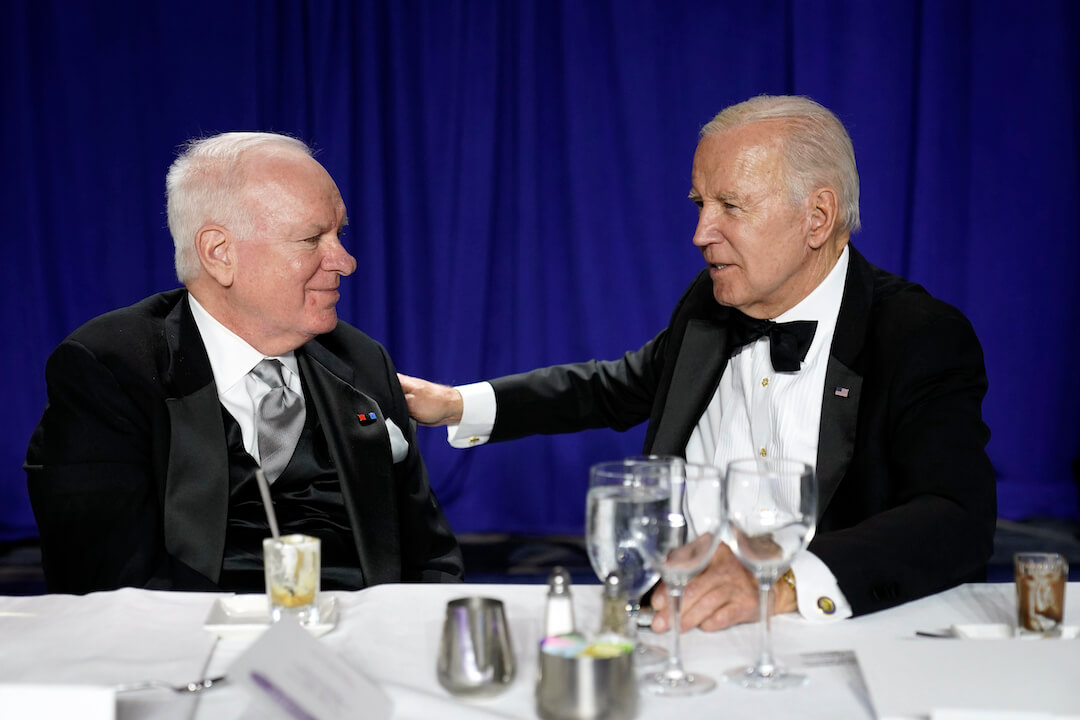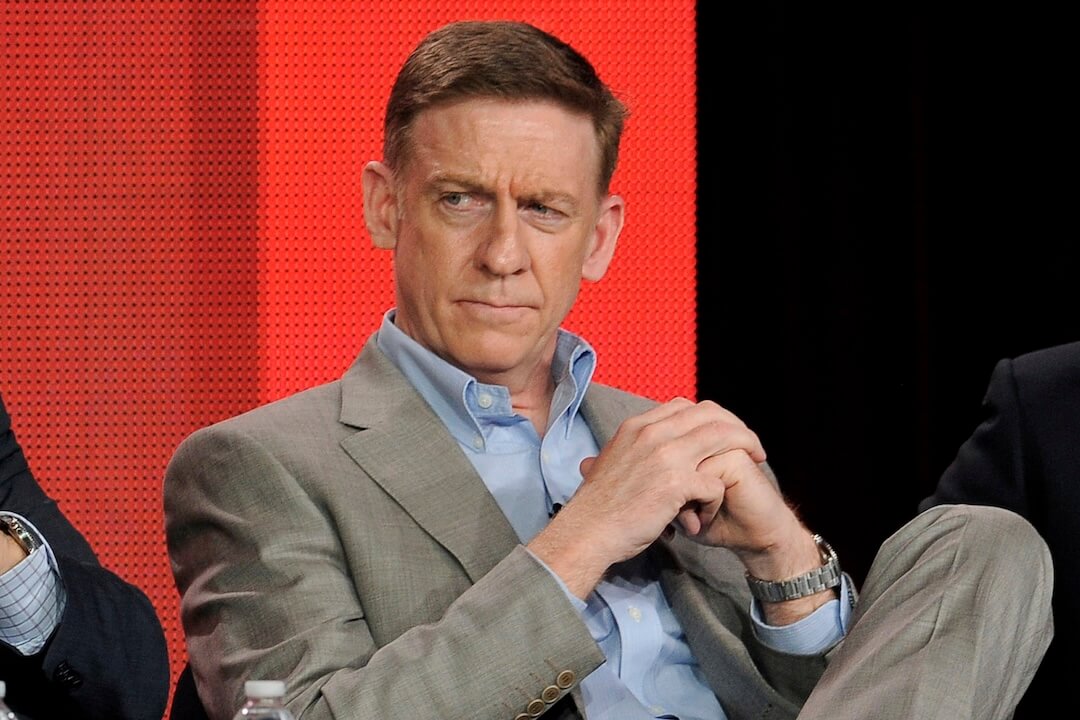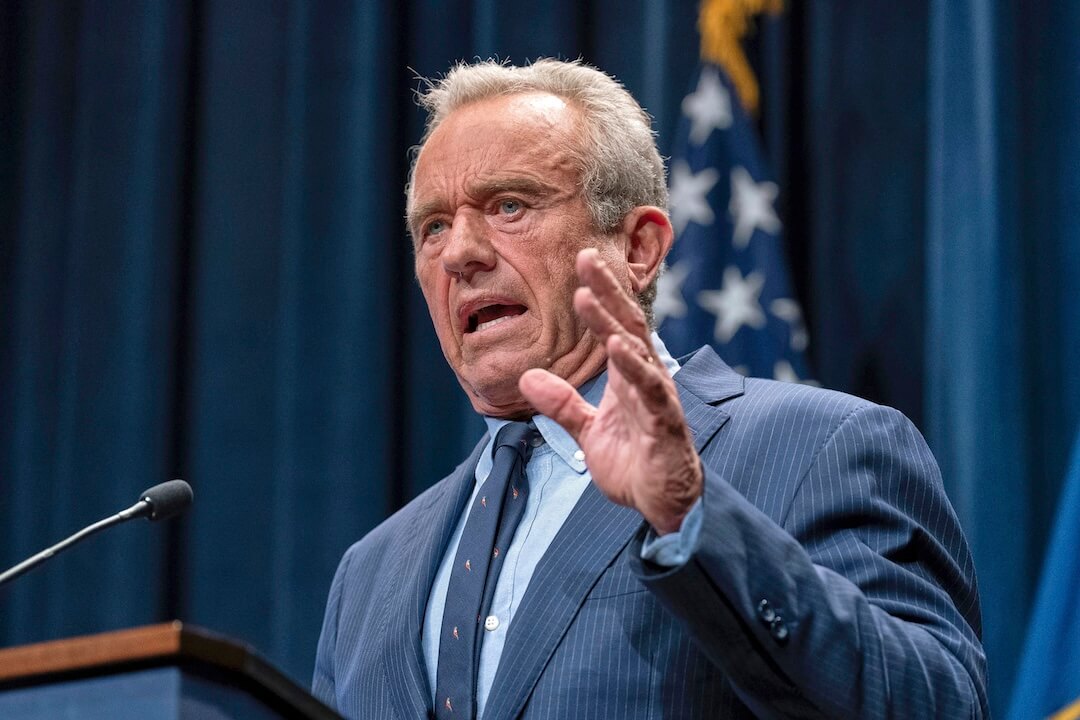The race for the White House ramps up even more this week with the Democratic National Convention in Chicago.
Believe it or not, it still has been less than a month since President Joe Biden announced he would not seek a second term. Since then, Vice President Kamala Harris has catapulted into becoming the Democratic nominee and turned what looked to be a runaway victory for former President Donald Trump into a virtual dead heat.
Now, a month after Trump and the GOP made their pitch to America at the Republican National Convention, the Democrats will step into the spotlight with their argument this week.
It’s a convention unlike any other we’ve seen given the events of the past several weeks.
So, what should we expect?
Over the weekend, I had a chance to ask Katie Sanders, editor-in-chief of Poynter’s PolitiFact, about what to look for at the DNC and PolitiFact’s plan for coverage. Here is our exchange:
Tom Jones: This is such an interesting convention because Kamala Harris has been the presumptive presidential candidate for less than a month. Is this presenting any challenges different from conventions where you’ve known who the candidate was going to be months ahead of time?
Katie Sanders: No doubt it has been hectic for the team, but it’s fun to be in our role at this moment, when voters are so engaged and have so many questions.
Claims about Vice President Kamala Harris’ career, biography and her 2019 presidential run are flying fast, and she’s been on the trail a fair amount with digs about the Republican ticket. There’s also the all-new cascade of claims by and about Gov. Tim Walz to manage, plus Sen. JD Vance doing a lot of media and speeches, and, of course, headline-grabbing press conferences and rallies by former President Donald Trump.
Politicians tend to repeat themselves, and our live coverage benefits from that fact. Our deep archive of Trump/Biden fact-checking helped us provide quick answers through the first debate and the Republican National Convention speeches and counterprogramming. We’ve been trying to prepare as much as we can for this week’s lineup of speeches, but we will probably hear more new claims to report out than usual. That’s my guess.
Jones: Harris will speak later in the week. Before her speech, what are some of the themes you are expecting the Democrats to hit on? What do you think viewers should be on the lookout for?
Sanders: I expect warnings about abortion access and Project 2025 to be recurring talking points all week.
Trump’s agenda and the Project 2025 work plan for the next GOP administration are not synonymous, but you’ll probably hear sweeping language about “Trump’s Project 2025.” The relationship is more complicated than that, and there’s no one-size-fits-all answer for what Project 2025 and Trump’s campaign agenda have in common. I encourage journalists and listeners to dig for nuance; we certainly will as we sort out the zingers of the week.
Jones: Tell us about PolitiFact’s approach to covering Harris’ speech? How has she been doing out on the campaign trail so far, and what are you anticipating from her at the convention?
Sanders: Harris has only recently started to unpack the details of her agenda, starting with Friday’s economic speech. So there’s a big part of me that isn’t sure what to expect. Her stump speech so far has featured misleading talking points, borrowed from President Biden, about what Trump’s presidency would mean for Social Security, Medicare, health care and abortion. (Trump isn’t calling for a national abortion ban, for example.) But a convention speech is different, and she will need to introduce her personal and career biography on the national stage. We’ll see how much lends itself to fact-checking.
Jones: I think we talked about this before the Republican National Convention, but has PolitiFact’s coverage of party conventions changed over the years? If so, how?
Sanders: The essentials of our approach are the same: We’ll explain what the prime-time speakers get right and wrong each night. What we’ve added this year is a live blog so readers can keep an eye on our rolling analysis as speeches are made. And we’ll translate our work into Spanish for our PolitiFact en Español website and WhatsApp channel.
With protests expected, there will be more for our team to cover outside of the convention programming. Interest will be high in those scenes and the news and punditry conversation around them.
Our partnership with PBS NewsHour is also new this cycle. We will work with their digital and broadcast teams to bring our convention fact-checking to more audiences, just like we did for the RNC.
Jones: You’ve listened to all these speeches and rallies that Donald Trump and Kamala Harris have had in recent months. Any thoughts on which topics will be especially prevalent for the final 80 days or so before the election?
Sanders: The economy: Harris trying to empathize with voters’ financial pain and blaming corporations and Trump arguing she is responsible.
Abortion: Harris holding Trump responsible for strict abortion bans in place after the Supreme Court reversed Roe v. Wade, and Trump saying he will not try to interfere with state abortion policies.
Immigration: Trump holding Harris responsible for the southwest border (and exaggerating her role) as she and the Democrats cite numbers that make their policies appear effective.
My thanks to Katie Sanders, and be sure to check out PolitiFact often throughout the week from the Democratic National Convention. Now here are some other pieces of note heading into the DNC …
- The Washington Post’s Amy B Wang and Maegan Vazquez with “The speakers, schedule and how to watch the Democratic National Convention.”
- Politico’s Ryan Lizza with an extremely informative interview with political strategist and former Bill Clinton adviser Doug Sosnik: “‘A Completely Different Campaign’: How Kamala Harris Reopened the Electoral College Map.”
- Washington Post columnist E.J. Dionne Jr. with “Harris can seal the deal this week by being new, improved — and loyal.”
- A fascinating story from The New York Times’ Shane Goldmacher: “The 47 Seconds That Saved Kamala Harris’s Political Career.”
- Politico’s Adam Cancryn and Jonathan Lemire with “Biden heads to Chicago for a hero’s goodbye.”
- The Associated Press’ David Bauder with “They look like — and link to — real news articles. But they’re actually ads from the Harris campaign.”
- Axios with “Who’s speaking and what to expect.”
- Finally, set aside a half hour or so to read this major deep dive in The New York Times Magazine from Robert Draper: “Joe Biden’s Interrupted Presidency.” And, along with it: “Six Takeaways From the Magazine’s Profile of Joe Biden.”
A new name and a new plan
The Star Tribune newspaper in Minneapolis is changing not only its name, but its approach. At a time when local news is shrinking, The Star Tribune, one of the top regional papers in the country, is expanding its coverage.
The Star Tribune will now be called The Minnesota Star Tribune, and will more heavily cover the state of Minnesota beyond the Twin Cities.
In a story posted on the paper’s website, the “new” outlet laid out its overview of what’s ahead, including a new name and look, expanded coverage across the state, new areas of focus, a diversity of voices, a new digital presence and new subscription offers. It also plans to hire more reporters.
The story said, “We think Minnesota deserves a news organization that’s willing to try new things to succeed. With your support, we think we can meet our vision to become the leading model for local news in America. What won’t change is our commitment to the truth and to putting our audience at the center of all that we do. You deserve nothing less than an excellent, objective news organization you can trust. One that’s worth subscribing to, because good journalism is worth the price — now more than ever.”
This all comes after an infusion of money by billionaire owner Glen Taylor, who also owns the Minnesota Timberwolves and the Minnesota Lynx.
Steve Grove, the publisher and chief executive, told The New York Times’ Katie Robertson that the hope is to triple the publication’s paid digital subscriptions over the next five years. It’s believed the paper’s digital subscriptions are around 100,000.
Grove told Robertson, “It’s definitely a bet that Minnesotans care about what’s happening outside of their own local communities.
However, The Star Tribune also has added some new local beats, as well.
The Star Tribune appears to be one of the local news success stories and, instead of standing pat, it is aggressively trying to stay ahead of the business.
In a statement, Taylor said he decided to invest more in the news outlet because of “my belief in the team’s plan, and in our audience’s demand for quality, objective local news. I’m incredibly excited by what our new leadership team has put into place at an important moment for our state.”
Remembering John Lansing

John Lansing, left, speaking with President Joe Biden at the 2023 White House Correspondents’ Association dinner. (AP Photo/Carolyn Kaster)
John Lansing, the former CEO of NPR, died last week. He was 67. The cause of death wasn’t immediately made public.
Lansing served as NPR’s CEO for four years, from 2019 to this past spring. In a story for Poynter, my colleague Angela Fu noted that Lansing’s tenure included “the COVID pandemic, a nationwide racial reckoning and mass layoffs.”
Fu wrote, “Lansing ultimately decided to step down several months before his term was set to end. (NPR public editor Kelly) McBride, who is also Poynter’s senior vice president and the chair of its Craig Newmark Center for Ethics and Leadership, said that despite setbacks like the layoffs, she credits him with keeping NPR on air during a challenging time and remaining committed to diversity despite financial difficulties.”
McBride told Fu, “I just had so much respect for his integrity and his style of leadership. He was a really, really good guy, and that is not always the case with media executives. Many of them are smart, and they’re very good journalists or they’re very good businessmen. But he just was a really good guy also, in addition to being those other things.”
Check out Fu’s story for more, as well as this story from NPR’s David Folkenflik.
Media tidbits
- Los Angeles Times news and culture critic Lorraine Ali with “Media reaction to Trump campaign email leak starkly different from 2016, when Clinton was hacked.”
- The Washington Post’s Drew Harwell with “Far-right influencers turn against Trump campaign.”
- The New York Times’ Jack Nicas with “Elon Musk Closes X Operations in Brazil Over Fight With Judge.”
Hot type
- For The New York Times, Michael Sokolove with “‘The Blind Side’ Made Him Famous. But He Has a Different Story to Tell.”
- For “CBS News Sunday Morning,” correspondent Nancy Giles with “The distinctive voices of Carol Kane.”
- The Associated Press’ Stephany Matat with “A hunter’s graveyard shift: grabbing pythons in the Everglades.”
More resources for journalists
- Lead With Influence is for leaders who manage big responsibilities but have no direct reports.
- Check out our dynamic, in-person workshop for new newsroom managers.
- Try our free Grant Writing for Journalists self-directed course.
Have feedback or a tip? Email Poynter senior media writer Tom Jones at tjones@poynter.org.
The Poynter Report is our daily media newsletter. To have it delivered to your inbox Monday-Friday, sign up here.







